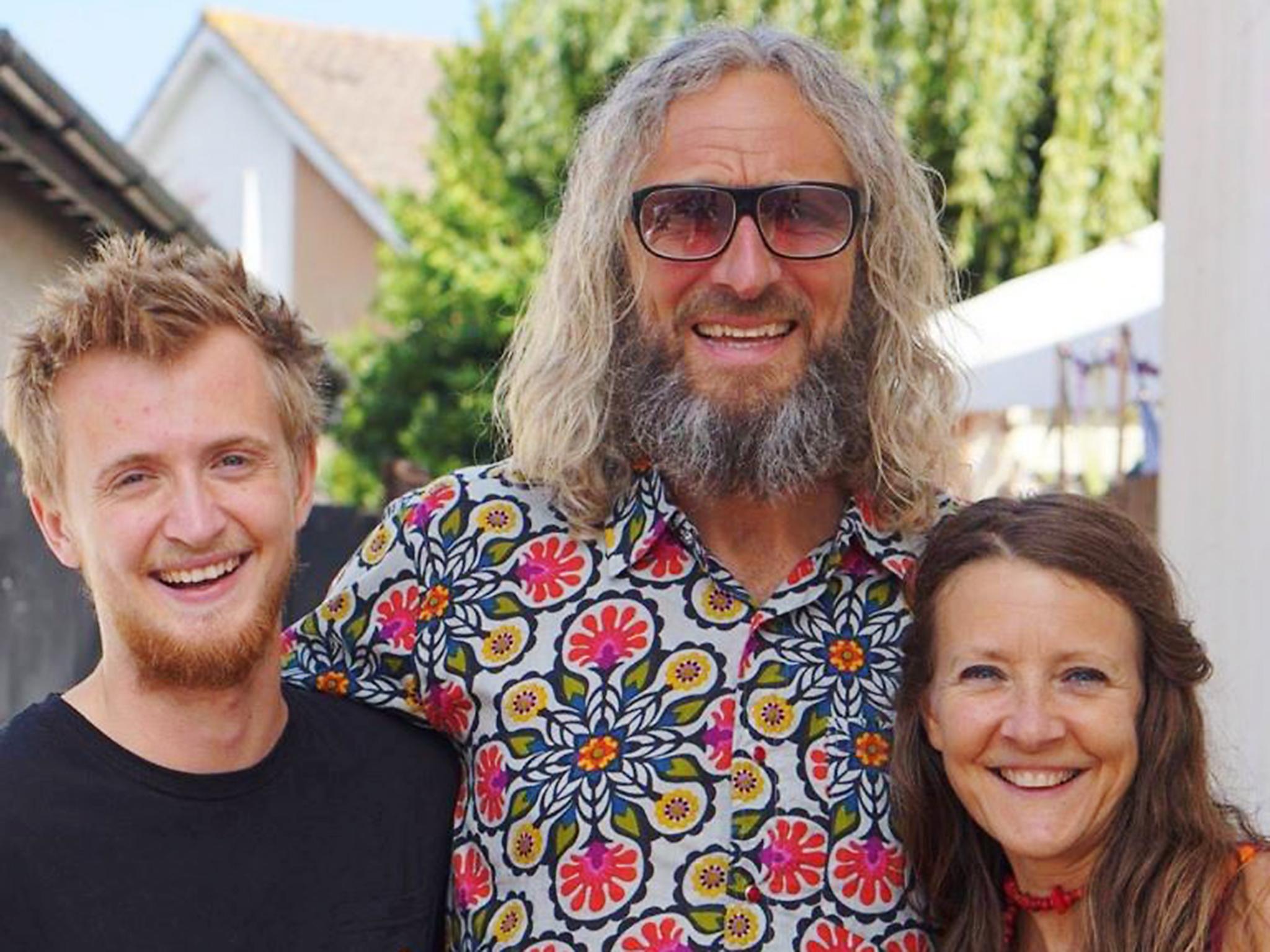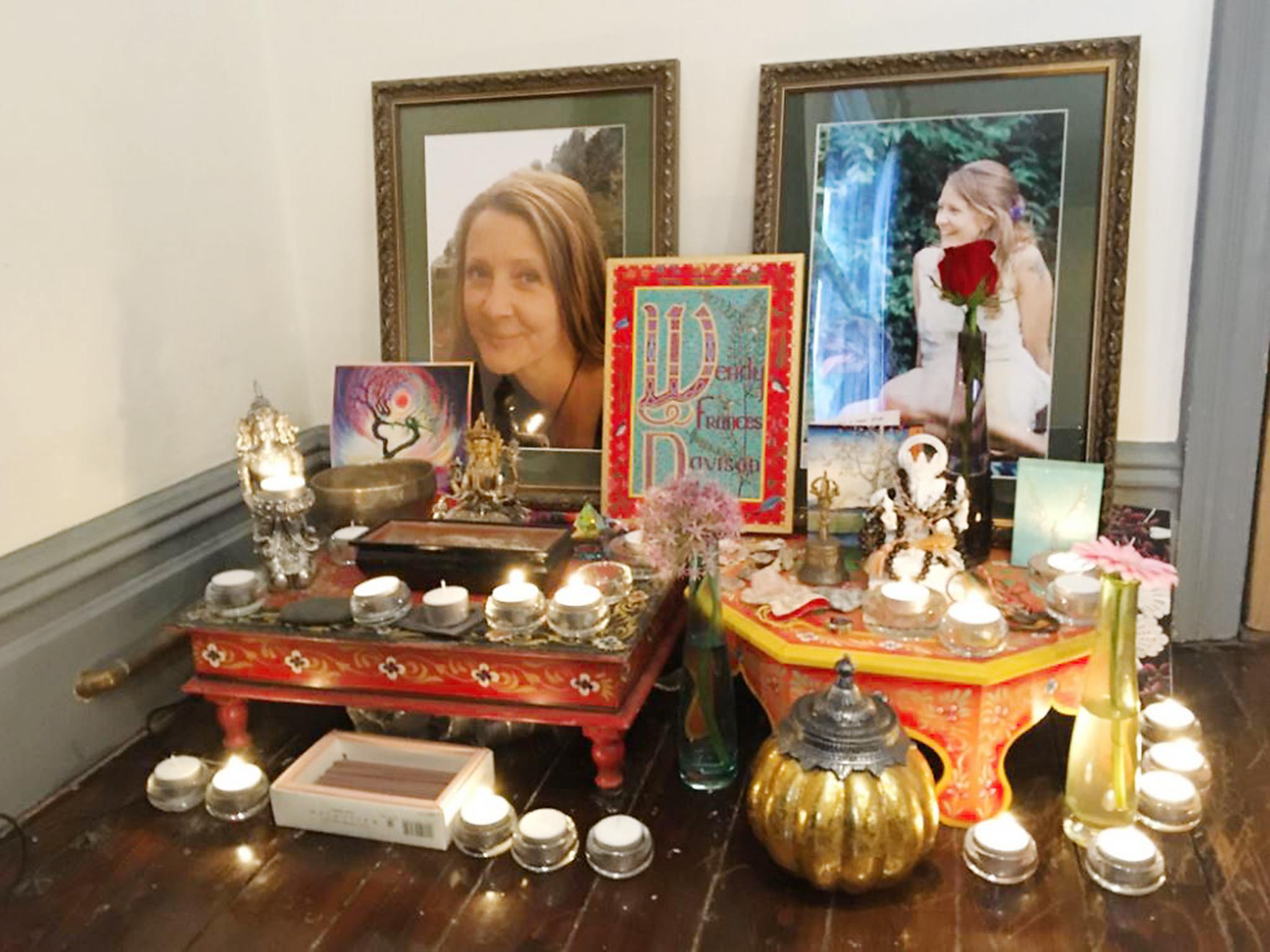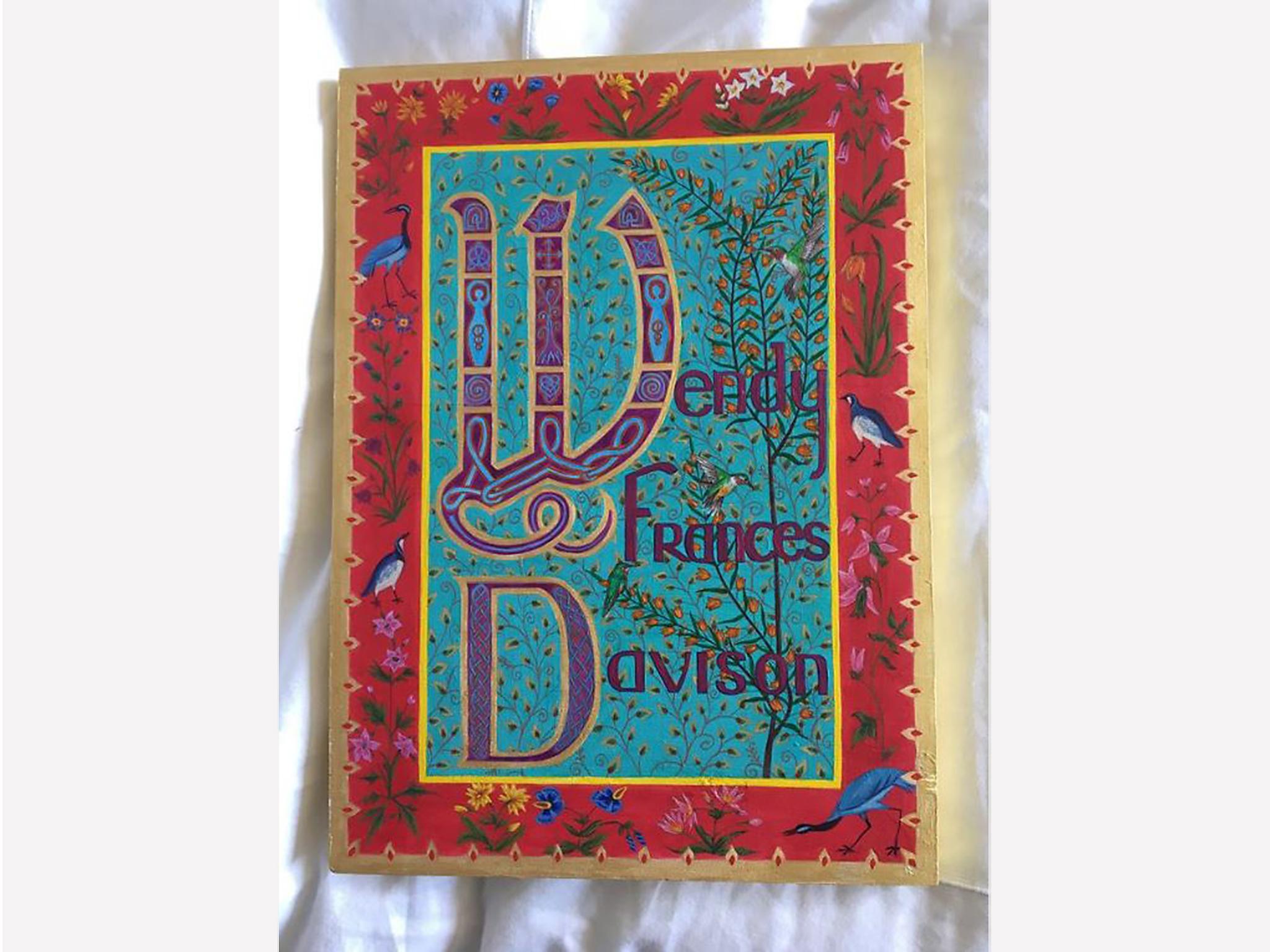Man who slept next to his dead wife's body for six days recommends the experience
Exclusive: In his first interview since his Facebook post about sleeping in the bed next to his wife Wendy's 'cocoon' went viral, Russell Davison says he would 'recommend it to absolutely everybody'- and sending her to the undertakers or a mortuary would have been weird

Your support helps us to tell the story
From reproductive rights to climate change to Big Tech, The Independent is on the ground when the story is developing. Whether it's investigating the financials of Elon Musk's pro-Trump PAC or producing our latest documentary, 'The A Word', which shines a light on the American women fighting for reproductive rights, we know how important it is to parse out the facts from the messaging.
At such a critical moment in US history, we need reporters on the ground. Your donation allows us to keep sending journalists to speak to both sides of the story.
The Independent is trusted by Americans across the entire political spectrum. And unlike many other quality news outlets, we choose not to lock Americans out of our reporting and analysis with paywalls. We believe quality journalism should be available to everyone, paid for by those who can afford it.
Your support makes all the difference.At 4.40am on Friday April 21, Russell Davison’s “absolutely wonderful, truly remarkable, much loved, respected, fearless, brave wife, best friend and soulmate Wendy” passed away from cervical cancer, aged 50, at home, in the arms of her husband and her son Dylan.
So far, so bittersweetly normal.
It is what happened next that caused the social media sensation.
Mr Davison did not call the undertakers to his five-bedroom Victorian house in Derby.
Instead he ceremonially washed his wife’s body, put her in a “lovely flowery summer dress”, lifted her from the bed into the organic, cotton-lined wicker “cocoon” – “Wendy never liked the word coffin” – and stayed with her for the next six days.
The first night, after sobbing for what seemed like ten hours, the grieving husband got into the bed next to the coffin, “got my kindle out, had a read and went to sleep”. And the next morning, “There was nothing that upset me about being in a room with a dead body. It was the opposite: Wendy’s body was still there and that was really comforting.”

More and more people were invited to the vigil for Wendy: not just their spiritualist, Buddhist and pagan friends, but all sorts - an ex-boxer, a four-year-old girl.
And then, when it was time, at 8.30am on Thursday April 27 – after informing a bemused police force of what they were going to do – Mr Davison and his sons put Mrs Davison’s body in the back of their Land Rover Discovery and drove it to the crematorium.
She looked absolutely beautiful, there was no real decomposition...
Now, in his first interview since his Facebook posts detailing how he stayed with his wife’s body became public, Mr Davison has told The Independent: “I know this might seem weird to a lot of people, but I would recommend it to absolutely everybody.”
“She looked absolutely beautiful,” says Mr Davison, a 50-year-old landlord and letting agent.
“I did put incontinence pants on her, just in case there were leaks, but there weren’t any.
“There was no bad smell, no fluids. Even though all we did was close the curtains so her body wasn’t exposed to direct sunlight, there was no real decomposition, nothing highly unsightly or disturbing.
“Her face sank a bit, and her mouth started to drop open near the end, but not right open. They say the fingernails and the toenails don’t stop growing, and it looked like Wendy’s had grown a lot, but we looked it up and in reality it’s more a case of the skin shrinks off.”
Besides, explains Mr Davison: “As I told one friend, ‘We are so into nature and everything it brings, there is nothing that could happen to Wendy’s body that could frighten us’. We were in tune with it, we were watching what nature does when it is left to its own devices.”
We found so much comfort from it...We were saying 'How could we let some stranger just take Wendy off and put her in a fridge'?
And in fact: “At one point, in the initial stages, we thought she looked like she was smirking. It looked just like she had a little cheeky grin. That brought quite a lot of amusement.”
“We just found so much comfort from it,” he says. “Wendy had died, but we had still got her. We knew she was no longer alive, but it felt like an emotional decompression chamber, to start the [grieving] process.
“Otherwise it would have been such a sudden thing. Your loved one dies, and normally within a few hours, the funeral director takes her away in a black plastic bag in a black van.
“A short time into the vigil, we were all saying how could you let that happen? How, as a family, could we let some stranger just take Wendy off and put her in a fridge?”

She would have done the same for him. They were, he explains, childhood sweethearts, who met and fell in love for the first time at school, aged 12.
Though fate initially took them apart, to marry and have children with others before getting together again 13 years ago, they came to realise, as Mr Davison puts it, “We believe in reincarnation, that we live before, and live after: our spirits were incarnated to find each other.”
His past may have included running nightclubs and having a 1999 top ten hit, with the club anthem Everyboy, as a member of Progress Presents The Boy Wunda. But they became “hippies at heart, with significant spiritual beliefs.”
They borrowed widely, from Buddhism, paganism, North American Indian traditions and ancestral spirituality practices.
“If it resonated with us,” says Mr Davison, “We took it.”
So when Wendy was diagnosed with cervical cancer in 2006, she caused what her husband proudly calls “a mini-revolution”, insisting on self-researched “natural healing” to the point that one (genuinely) “lovely” consultant wrote on her medical notes: “Patient is refusing Western medicine.”
When was given six months to live, they embarked on their “gypsy travels” round Europe – for what turned out to be three years.
They planned the special ceremonial celebration of her life that will be held this Sunday May 14 – now with the added request that donations go to a new natural health centre in Derby, the Wendy Centre, named in her honour.
If the spirit is confused and hanging around, at least they are in familiar surroundings, instead of a black plastic bag in a mortuary
They were never going to accept anything conventional when it came to death.
“About five years ago,” says Mr Davison, “We were part of a Steiner community biodynamics study group. One of the members said they would sit with their dead at home, because sometimes when a body dies, the spirit doesn’t always leave straight away. If there is confusion at the point of death, the spirit might hang around.
“So you have the body in a familiar place, your home, with familiar people, friends and family. So if the spirit is confused and hanging around, at least they are in familiar surroundings with familiar people and would be reassured – instead of being in a black plastic bag in a mortuary.
“We heard that and thought: ‘That makes complete sense.’”
“It evolved,” adds Mr Davison. “We made up stuff that felt right as we went along.”
They listened to the wisdom of “death doulas” at the Buddhafield festival in Somerset, and took tips from one of Wendy’s best friends who had sat in vigil over the body of her Buddhist teacher.
“Initially we were going to do it in the lounge,” says Mr Davison, “But we realised Wendy’s body would be alone when I went to sleep, so we decided on the bedroom.”
They watched the Japanese film Departures together, and loved the ritualised washing of the body that it depicted.
Nothing was left to chance, certainly not the legal side.
To ensure that everything was done legally, Mr Davison arranged for a doctor to visit Wendy every two weeks.
So not only did the police know about the movement of a dead body, but the death certificate was also signed by a doctor who had seen the patient within the last two weeks.
When the time came, Mr Davison was able to call upon the help of Amy, the girlfriend of Luke Nichols, Wendy’s 25-year-old son by her first marriage, and Erica, the girlfriend of Mr Davison’s 26-year-old son Benjamin.
“Amy, Erica and I washed her body ceremonially, with water” says Mr Davison, “We put the lovely flowery dress on her, then the two girls helped me lift her into the cocoon. We put her hands in a nice position with her Buddhist prayer beads on them. One of the girls put a slight bit of eyeliner on, and a little bit of lipstick, because her lips did look a bit dead.
“And she looked absolutely beautiful, just like she did in life.”
“We put a Buddhist mantra on the iPod, which was on repeat the whole time,” adds Mr Davison, “We put flowers round her in the cocoon. We had an altar for her next to the coffin, and we sat vigil on the bed.
“It was so much better than handing her over to a funeral director, where goodness knows what they do, and in some cases the body might just be processed as if it was on some sort of conveyor belt.”
Mr Davison, his sons Dominic, 22, and Benjamin, and Wendy’s son Dylan Nichols, 22, and Luke, had expected only their spiritually-inclined friends to participate.
Instead, a total of about 70 people joined a vigil that involved “talking about Wendy’s life, having a laugh, lighting candles and incense.”
Why should a dead body be more scary for a child than an adult?
Some, says Mr Davison, came frightened, and left enlightened.
“One of my friends is a former boxer,” says Mr Davison. “He’s one of, if not the toughest guys I know – and thanks to doing clubs in London, Derby and all over the world, I know a lot of very, very tough people.
“He didn’t want to go into the bedroom because he was afraid, but he said to me ‘If it is going to mean something to you, I will.’ He ended up staying in the bedroom for an hour and a half.
“He left so grateful. He said: ‘Russel, that’s just totally changed the way I see death’.”
One friend brought her four-year-old daughter.
“She strolled in,” says Mr Davison, “And sat with her [Wendy] no problem at all. In a natural culture, there is no segregation of ages. Why should a dead body be more scary for a child than an adult?
“Why should it be scary at all?
“I think the weirdness in this for some people comes from this preconception that there is something to be afraid of in a dead body. But that’s TV, Hollywood.
“That dead body is just the body of a loved one who bears you no malice at all. What could possibly be scary about that?”
“I know,” he adds, “That the experience will really help that child with her future conception of death and dead bodies.”
Most powerful of all, says Mr Davison, was the testimony of his 28-year-old nephew, who wrote to tell him: “I have really suffered mentally in the past with the thought of death. I have actually had to have some counselling about this issue.
“Seeing Wendy has really helped me and completely changed the way I feel about death. I have realised it is not this gory morbid thing I thought it was, it is actually just part of this beautiful journey of life.”
“I didn't know how long I would want to stay in a room with a dead body,” admitted the nephew, “But I could have stayed in that room all day and night. There was such a nice, warm, loving and caring energy in there and weirdly, I felt like it was a really special place to be. I found it amazing that everyone in there was connecting with Wendy in their own way whilst looking at her in her beautiful cocoon.
“It felt like that is how it is supposed to be when someone passes. The thought of my body being in a cold drawer in a morgue is a horrible thought and absolutely last thing I want for my body when I die.
“The way you did it, it was so personal, loving and intimate, it was full of grace and dignity and I am just kind of blown away with how special it made death feel - which is a bizarre thing to say I know?!”
And so Mr Davison has no regrets:
“I would recommend it to absolutely everybody, not just for people with spiritual beliefs. Even if you are an aetheist, you would benefit just in terms of emotional decompression.”
In fact, he wonders, was it really his and Wendy’s way that was weird, or was it the 21st Century Western insistence on calling the undertaker and putting the body in a mortuary freezer?
“We live in such a fear-orientated society,” he says. “We have become incredibly frightened of death, petrified of it.
“It’s not like that in natural cultures. Go to the Amazon basin and see how they treat their dead, with children around the body. They would say that what we did with Wendy was totally normal.”
“Really early on,” he concludes, “It was the other way that started to feel not right.”
Join our commenting forum
Join thought-provoking conversations, follow other Independent readers and see their replies
Comments